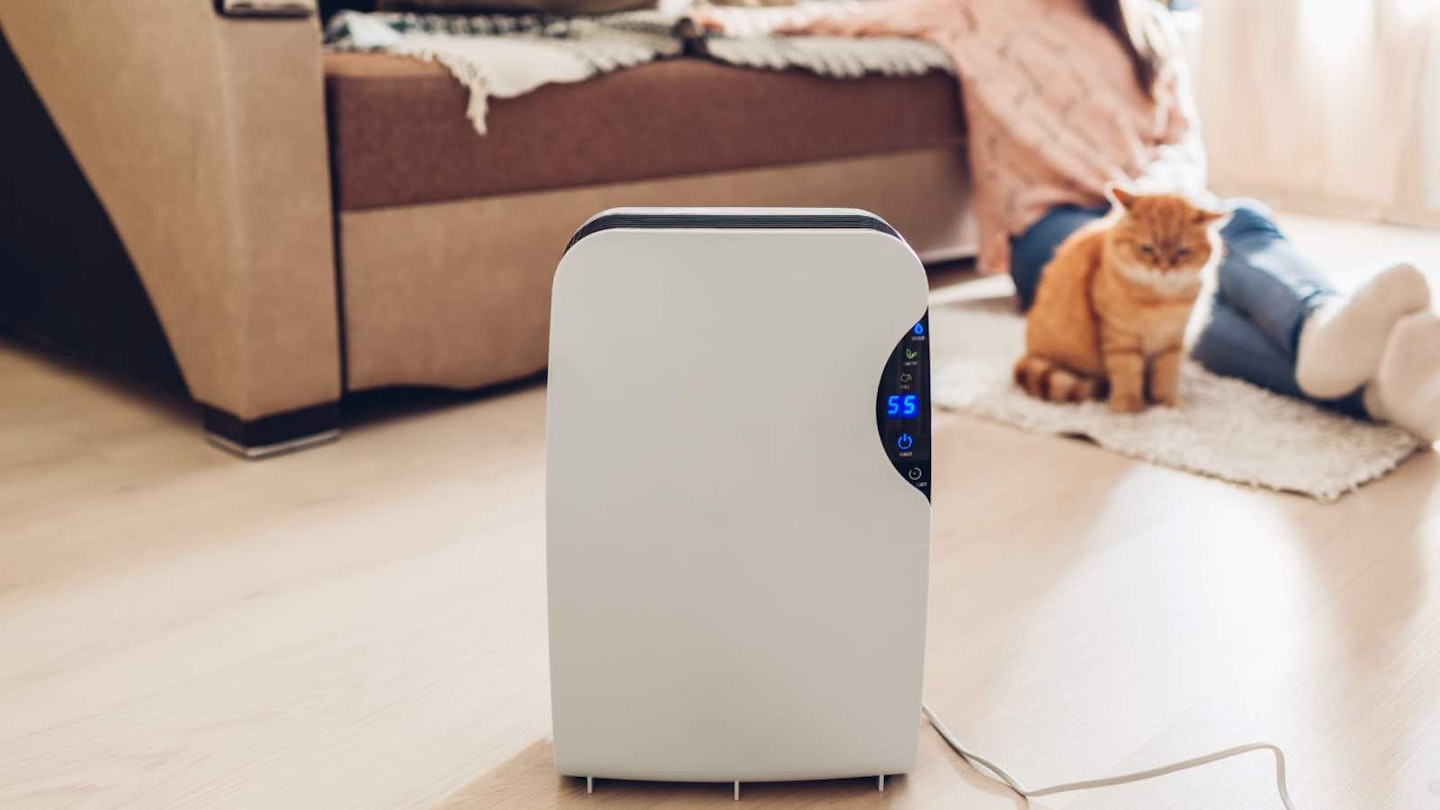Picture the scenario; you wake up to condensation on the windows, and over time you notice a black line of mildew forming around the frames. Or, you walk into the unheated spare room where you usually dry your washing, and notice it smells musty.
If either of those situations ring true for you - or you can just notice a thickness to the air around you at home, then the best dehumidifier might be just what you need. But that’s hard to ascertain if you don’t know what one does.
Put simply, a dehumidifier helps to control moisture levels in your home, making it drier, more comfortable, and healthier to live in. Whether you're dealing with everyday humidity, drying laundry, or keeping mould at bay, a dehumidifier can be a surprisingly powerful addition to your home and, with energy costs ever increasing, keeping humidity levels in your home under control is one way to cut costs.
Below, we’re taking a look at the benefits, the signs you might need one, and how they actually work, so that you can decide whether it’s worth investing in one.
What are the benefits of having a dehumidifier?
The main job of a dehumidifier is to reduce the amount of moisture in the air, but that simple action can bring a whole range of benefits. Firstly, less humidity in a room lowers risk of mould and mildew - those fungi that thrive in damp corners and can trigger allergies and respiratory problems. By keeping moisture under control, you're also helping to preserve your furniture, walls and even electronics from damage caused by excess damp.
If you already have a damp problem, a dehumidifier is incredibly helpful, but you’ll still need to address the root cause.
A dehumidifier can make your home feel more comfortable, too. High humidity often makes rooms feel warmer and heavier than they actually are. A dehumidifier takes that edge off, making it easier to breathe and cooler without needing to crank up the air con.
For me, where a dehumidifier really comes into its own, is when you’re drying washing indoors. Rather than waiting for clothes to dry slowly and add more moisture to the air, the dehumidifier speeds up the drying process while reducing the risk of damp developing in your walls or windows.
Plus, many modern dehumidifiers have filters that help improve air quality by trapping dust, pet fur and allergens.
How do you know if your room needs a dehumidifier?
There are several tell-tale signs that your room could benefit from a dehumidifier. First and foremost: condensation. If you're seeing water droplets on the inside of your windows, especially in the mornings, that's a big clue. You might also notice a damp, musty smell that lingers, even when you open a window.
Other red flags include peeling wallpaper, warped wood, and mould patches forming on walls, ceilings or behind furniture. If your clothes or bedding feel a bit damp to the touch, even when they're clean and dry, excess humidity might be to blame.
People with allergies or asthma might also find they struggle more in rooms with high humidity, as mould spores and dust mites thrive in moist environments. A dehumidifier can help make these spaces healthier and easier to live in.
And finally, if you're regularly drying washing indoors or cooking without an extractor fan, you're probably adding more moisture to your home than you realise. A dehumidifier can balance things out and prevent the long-term effects of all that added steam.

How long does a dehumidifier take to dry a room?
There’s no one-size-fits-all answer to this, as it depends on a few things including the size of the room, how damp it is to begin with, the capacity of your dehumidifier and how much ventilation the room gets.
That said, most standard home dehumidifiers will start making a noticeable difference within a few hours. For a medium-sized room with moderate damp, you might see results within 12 to 24 hours. In a very humid space, or one that’s poorly ventilated, it might take a day or two to bring humidity levels down to a comfortable range.
If you're using a dehumidifier to help dry washing, it could take just a few hours to reduce the dampness from wet clothes – especially if you use a laundry setting or direct airflow toward your drying rack. Keeping doors and windows closed during this time helps the machine work more efficiently.
Does a dehumidifier get rid of damp?
This is where it’s important to draw a distinction between reducing moisture and fixing the root cause. A dehumidifier is brilliant at managing the symptoms of damp like condensation, mould, and musty smells, and can make your home feel drier, fresher and more comfortable.
But if your damp is caused by a bigger issue, like a leaking roof, rising damp or broken guttering, a dehumidifier won’t solve that underlying problem. It’s more of a supporting player. A really helpful one, granted, but not a total fix.
If you suspect a structural or persistent issue, it’s best to consult a damp specialist or builder to get to the root of the problem. That said, while you’re investigating or waiting for repairs, a dehumidifier can stop things from getting worse and keep conditions more pleasant in the meantime.
From fresher air to protecting your interiors, a dehumidifier really does punch above its weight in terms of usefulness. And if you’ve been on the fence about getting one, hopefully now you’ve got a clearer idea of what it does.
Becky Fuller is a Senior Digital Writer for Yours.co.uk. She is a fully qualified personal trainer and strength coach, specialising in fitness and wellbeing for over 50s. Becky is passionate about kettlebells, and runs an all-female kettlebell club in the local community. She holds a variety of professional fitness qualifications including Level 3 pre and post-natal fitness, and Level 4 GP referral for exercise.
